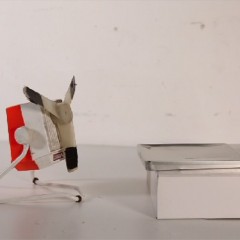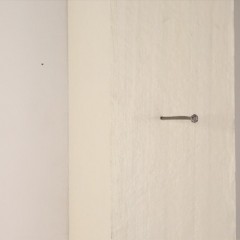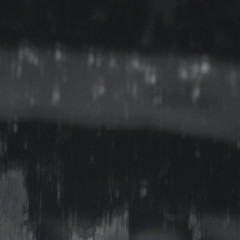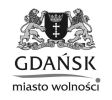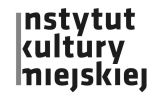Igor Krenz
SELF-THRUST
18”, 2014
CLOSING OF THE BOX
1’29”, 2014
BLOW UP ATTEMPT OF THE CABBAGE
1’07”, 2012
In his films, Igor Krenz very often refers to the aesthetics of a scientific experiment. However, you won’t find here any sophisticated or calibrated measuring apparatuses, and the results of the artist’s investigations are difficult to describe in a “rational” way. Subject to his tests are mundane objects found in the everyday environment – cabbage, sack of flour, light bulbs, nails, candles etc. The laboratory where Krenz carries out his experiments is an ordinary table or a fragment of a white wall.
The viewer finds it difficult to determine whether the observed experiments come to a successful or a failed end. What effect are they aimed at achieving, and what purpose do they serve? Nonsensical combinations of objects and titles of works suggest rather that what we are observing is a sophisticated joke made by the artist.
Despite this casual and humorous form, the artist poses serious questions about the potential and borders of rational cognition. If we only use a wiseman’s glass and eye, we will find nothing more in Krenz’s films than a record of a bizarre use of a bicycle pump, a cabbage torn apart by pressure or a hammered nail.
Rerun
video with music by Robert Piotrowicz, 2012
Even though Igor Krenz’s film Rerun is formally different from the majority of the artist’s works, in reality it is his yet another experiment. This time, it does not relate to objects of everyday use but to the viewer’s senses.
Camera shots, supported by music composed for the film by Robert Piotrowicz, seem to be a record of a landscape seen from several hundred meters above the surface of the earth. We can see mountains, forests, fields, rivers and all other elements of the landscape that we wish to discern in the film. Yet, the trick is that in reality the camera is moving all the time along the artist’s desk. What appears in front of the camera are different kinds of pasta, scotch tape, rubbers etc.
Even though the film bears a formal reference to works from the 1950s and 1960s, it was produced with state-of-the-art technology, and this allows the artist to carry out an alchemical transformation – observation of mundane objects changes into the viewer’s psychedelic experience.
Igor Krenz (b. 1959), lives and works in Warsaw.
Works mainly with film and photography. Most of his projects from the 1990s are a kind of game. Their titles include a claim which is later proved by the content of the works. They are formally sparse records of experiments, teetering on the border of nonsense and absurdity. To quote Łukasz Gorczyca: All his activities betray a significant aspect of a play which neglects the passage of time, but at the same time they are a perspicacious and intelligent game with cognitive rationalism. (…) Using simple film tricks and endearing sense of humour, Igor can effectively sow a doubt in the viewer’s mind as to the most basic physical facts. What’s more, he profits from this opportunity to undermine and sometimes even ridicule the existing canons of video art, demonstrating the great extent to which arbitrariness and illusion can guide us in our convictions, imaginations and emotions.
Graduate of the Academy of Fine Arts in Warsaw (1981-1986). In the mid-1990s, Igor Krenz founded the ZF Kino Film Group, an informal organisation dealing with the presentation, documentation and technological support of video art. Co-founder of the groups Photo Service and Azorro. He has presented his works at exhibitions and screenings at the Centre for Contemporary Art and Raster Gallery in Warsaw, GB Agency in Paris, and Tate Modern in London, among others.


